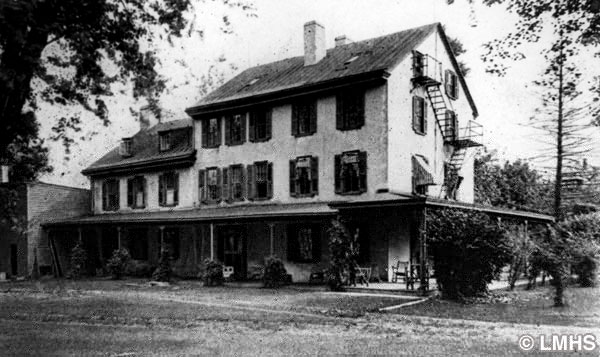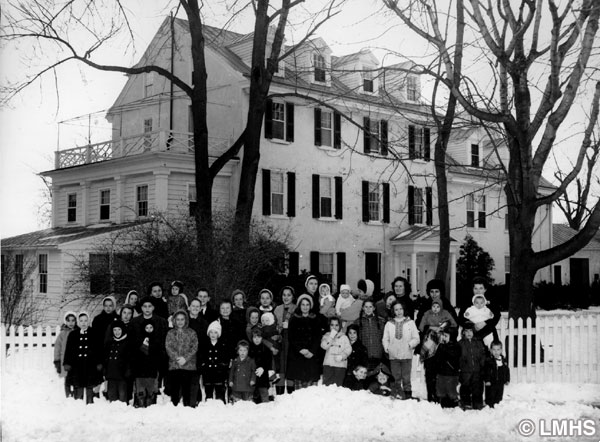The Buck Inn
Location, location, location…the real estate people tell us…is all important. The old Buck Inn of Haverford was blessed with a prime site, just where Old Lancaster Road and the New Lancaster Turnpike intersected and briefly overlapped. Currently, a car dealership occupies the place.
Popular Meeting Place
The Buck enjoyed the custom of stage coach travelers and gentlemen on horseback, or local men serious about their farming, namely the Society for Promoting Agriculture; their meetings rotated among local taverns. Drovers of large herds and “long roaders,” those rough fellows who hauled loads in the 3,000 or more Conestoga wagons plying the route between Pittsburgh and Philadelphia, usually used the Red Lion, down the Pike. Some say the Buck was built in 1730 or 1735, but records were burned so no proof is available. Others have written that either John (the American) Penn or his brother Thomas had a hand in the establishment, but proof is hard to come by. What is absolutely certain, however, is that General Washington stopped at the Buck long enough to write a letter to Congress (September 15, 1777) begging supplies for his already threadbare troops, depleted by the lost Battle of Brandywine, and still months away from winter quarters at Valley Forge.
Many innkeepers occupied the landmark: Griffith Evans, Samuel Rees, William Bell, Patrick Miller, John Gregory, Joe Miller, Jonathan Miller, and Edward Siter.
Subsequent Changes
The property became a residence in 1844 after purchase by a member of the Martin family whose descendants continued to own it for more than 100 years. From about 1950 offices occupied the building until a national food chain proposed to buy it for $200,000 and build a modern place to offer their own style of refreshment.
Neighbors flew to the defense of the historic former tavern, but Friends of the Inn failed in their efforts and the old Buck was demolished in 1964.


